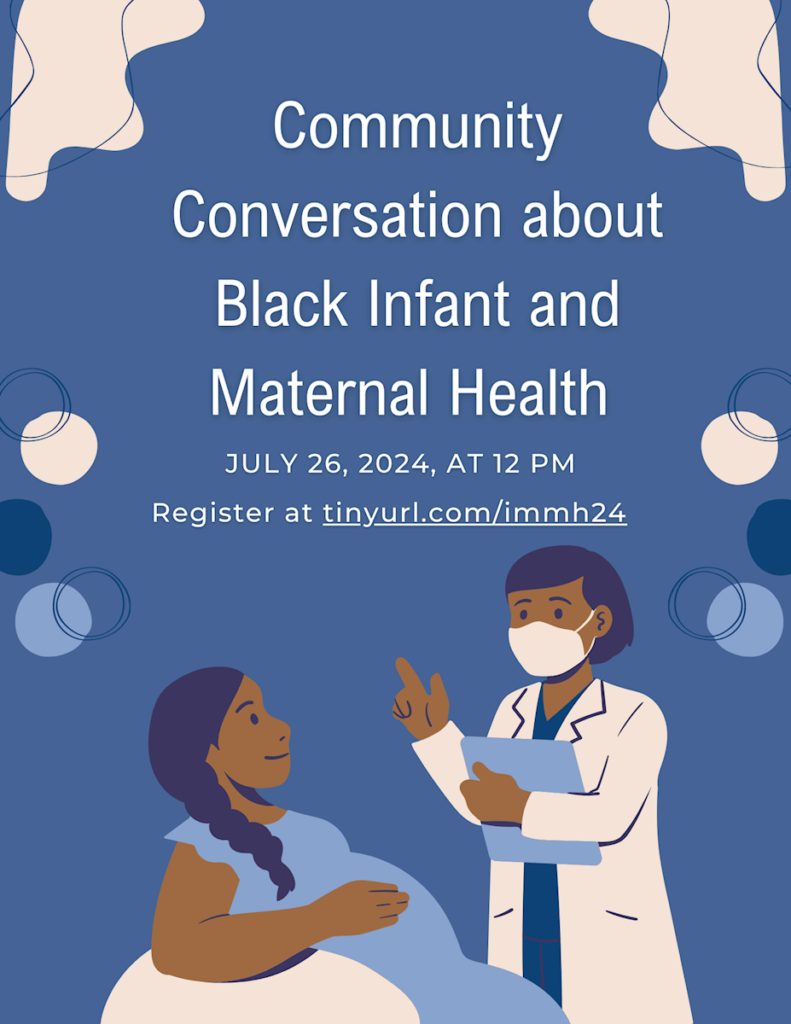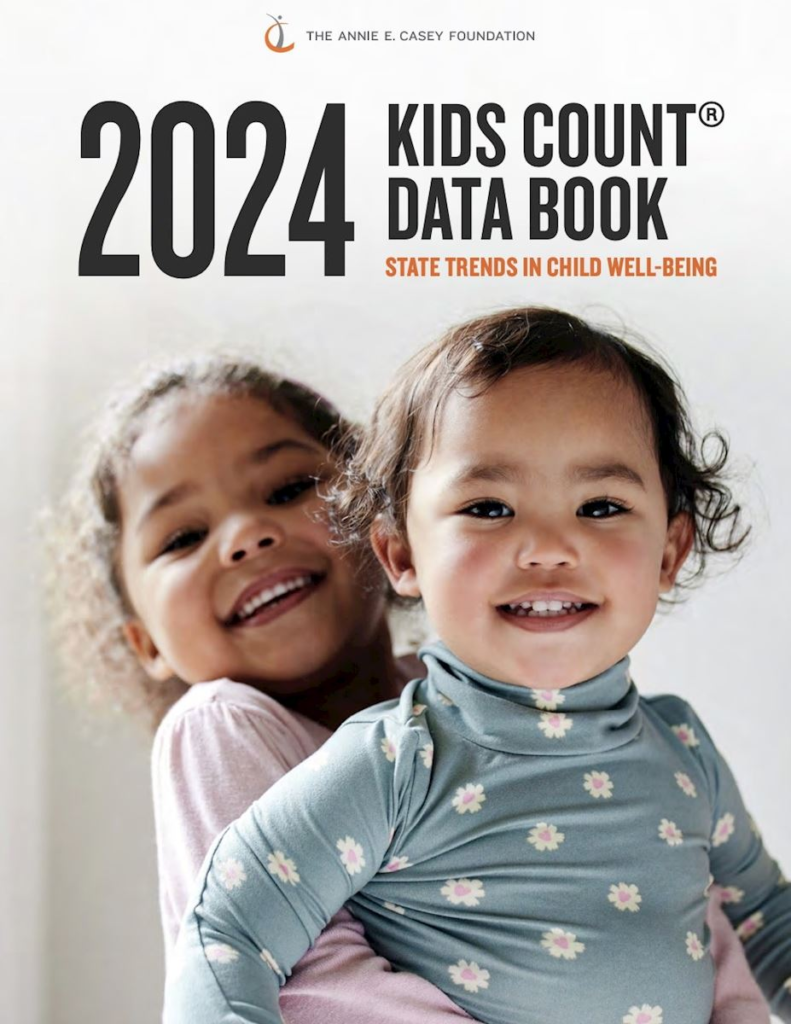Last week, Gov. Jim Justice stood on a stage with balloons, banners and giant scissors to celebrate what his team hailed as a historic revenue announcement. The announcement? State revenues hit a complicated trigger formula which will automatically reduce the personal income tax by about $80 million — resulting in an estimated extra 85 cents per week for the average West Virginia household.
Meanwhile, reduced state investment via years of flat budgets is having deep and painful consequences for families, businesses and our economy. In the first half of 2024, at least six child care centers have closed their doors, taking with them hundreds of slots for children of working families. School districts are facing unprecedented layoffs, with many paring back course offerings, shuttering services for students with learning and behavioral needs, and closing schools. The state faces lawsuits receiving national attention for its mistreatment and neglect of both incarcerated people and children in foster care.
According to tax cut proponents, slashing taxes is the answer to what ails us. But the reality is that most West Virginians—aside from the wealthy, which is no coincidence—will receive too little to even notice from either the automatically triggered tax cuts or the governor’s additional tax cut proposal.
A less-than-a-dollar-per-week tax cut won’t help a family cover the cost of child care or a child care provider reopen their doors. It’s nowhere close to enough to address the rising costs of college or job training. It won’t reopen a school that closed or pay for a tutor to help a student who needs more support. It can’t provide the economic stability struggling families need to avoid interaction with the child welfare system.
And that’s why there is a larger problem with our tax cut obsession—it is holding policymakers back from enacting a state budget that could address all of those issues and more while still growing our economy.
The calls for additional tax cuts and the fiscal uncertainty that automatic tax cut triggers create have driven lawmakers to underfund the state budget even relative to the artificially low revenue estimates. They recognize that there are painful tradeoffs needed to afford these tax cuts that manifest in the form of less revenue for major state spending needs. Increases in PEIA premiums for workers and their families were described as a “required” tradeoff for 2023’s tax cuts. Prioritizing maintaining a flat budget to create space for more tax cuts has meant that lawmakers have been unable to enact broadly popular legislation to stabilize child care providers, fund emergency medical services (EMS) agencies to prevent dangerous closures, increase funding for public schools and reduce infant and maternal mortality.
Addressing any of those needs would do more to improve West Virginia’s economic picture than a barely noticeable tax cut. Businesses and families largely want the same things—good schools and early childhood education infrastructure, an educated and healthy workforce, and high-quality infrastructure and public services like emergency response. But until we acknowledge that the tax cut obsession impedes building a state that truly seeks to meet the needs of families and businesses, thereby attracting and retaining more people, we will fail to experience real economic growth that is accessible to all.
Read Kelly’s full op-ed.
Learn more about the proposed tax cuts in this recent article featuring insight from Kelly.

Infant and maternal health outcomes are just two of many factors indicating the overall health of West Virginia. They create a narrative about connections with health and communal care and indicate areas for improvement. Over the past several years, the data around infant and maternal mortality have lagged in West Virginia, making it difficult to fully understand the challenges the state faces. The West Virginia Legislature, with recommendations from health care providers and advocates, passed new legislation to address this problem. An updated law now requires more timely reports and allows the review team to interview families of deceased infants or mothers, a best practice that can offer more detailed and nuanced information. Moving forward, West Virginians will have access to more robust data that can drive important policy decisions and make the state a healthier place to live.
Infant Mortality in West Virginia
Each year, the Fatality and Mortality Review Team (FMRT), a multidisciplinary team created to oversee and coordinate the examination, review, and assessment of special cases of death, is required to publish an annual report concerning cases reviewed that year. Within the FMRT, an Infant and Maternal Mortality Review Panel (IMMRP) studies infant and maternal mortalities, which “require extensive studies to enable the development of strategies to reduce such deaths in the future.” The IMMRP is tasked with identifying infant and maternal death cases; reviewing relevant medical records and other data; determining the preventability of deaths; establishing trends, patterns, and risk factors; and making recommendations to policymakers, among other responsibilities.
The 2023 annual report covers infant deaths between 2018 and 2020. The infant mortality rate indicates the number of children under one year who die per 1,000 live births. Between 2018 and 2020, West Virginia’s average infant mortality rate was 6.6 deaths per 1,000, a decrease from 7.2 deaths per 1,000 between 2014 and 2017. Taking a deeper look at the state data, the white infant mortality rate decreased from 6.8 deaths between 2014 and 2017 to 5.8 deaths between 2018 to 2020, respectively; over the same period, the Black infant mortality rate jumped from 13.7 to 15.0 deaths.
While the overall infant mortality rate decreased, the racial disparity between white and Black infants widened in West Virginia—a trend worth investigating. Furthermore, West Virginia still maintains a higher infant mortality rate than the United States overall.
The IMMRP also offered details about when and how infants passed away during this period. One in three deaths occurred before an infant was a day old, while 32 percent were between one and 28 days and the remaining 32 percent were between 29 and 365 days.
In the majority of cases analyzed, the IMMRP indicated that medical conditions were the top causes of death, from prematurity to congenital malformations. The undetermined deaths were ones that the panel could not distinguish between injury and medical causes.
Maternal Mortality in West Virginia
The FMRT annual report also included maternal mortality data for 2020. The maternal mortality rate measures the number of maternal deaths related to or associated with pregnancy per 100,000 live births. While pregnancy-associated deaths measure all maternal deaths that occur within this period, pregnancy-related deaths measure those aggravated by pregnancy; both measure deaths throughout pregnancy and the year afterward. The IMMRP must meet to determine the latter category, which reflects the public health standard for measuring maternal deaths. As such, the figures below reflect pregnancy-associated deaths for the time being. We included previous years’ pregnancy-associated maternal mortality rates for the sake of having a multiyear comparison. However, without more data, it is impossible to compare these data to national figures.
Still, this data provides meaningful information. In 2016, the pregnancy-associated maternal mortality rate was 100 deaths per 100,000. The rate decreased over the next few years, but jumped back to 132 deaths per 100,000 in 2020 when the COVID-19 pandemic began.
As with infant deaths, the IMMRP also reviewed maternal deaths to determine causes. Three in five maternal deaths were accidental and included factors like injuries and drug use. The natural deaths were medical, including sepsis and heart and liver conditions. It is unclear how many of these deaths were preventable.
These data are critical to understanding infant and maternal health outcomes in West Virginia. However, the information still lags, and without it, researchers cannot observe the full impact of the COVID-19 pandemic, recent policy changes, and other factors that played a significant role in individuals’ ability to engage meaningfully with the health care system and their community. Moving forward, these state reports will be timelier and more detailed, including the potential for family interviews. For the time being, infant and maternal health outcomes must be prioritized in West Virginia. The state must support policies that advance health care for all, ensuring that West Virginia is a safe and healthy place to live and thrive.
Read Rhonda’s full blog post.

Later this month, the WVCBP is hosting a discussion that will bring together health experts, community leaders, and families to address the disparities in Black infant and maternal health outcomes in the Mountain State. We invite you to be part of this important conversation as we seek solutions and support for our community.
The webinar will take place on Friday, July 26 at 12pm. You can register here.

The Hope Scholarship is a school voucher-style program that allows individual students to divert their state share of public school funding away from the public school system to be used instead for private school or homeschooling costs. It was announced last week that the program met state requirements to expand eligibility, which will significantly increase costs. A recent article, including insight from WVCBP executive director Kelly Allen, provides further details. Excerpt below:
State Treasurer Riley Moore announced that the Hope Scholarship Program has met state law requirements for opening up to all school-age children residing in West Virginia beginning in the 2026-2027 academic year.
The scholarship provides financial support for students to pursue education options outside traditional public school systems. Until now, the scholarship has applied to students leaving the public school system or to kindergarten students entering school for the first time. So students already enrolled in private school, for example, have not been eligible.
When the change becomes active, any non-public school student could draw down state dollars for education spending, in compliance with Hope’s other requirements.
The Treasurer’s Office estimates that an additional 30,000 to 40,000 students will be eligible once the scholarship opens up further.
The Hope Scholarship amount varies annually, depending on the amount of state aid funding per pupil provided to county boards of education for public school students. The scholarship amount for the most recent, 2023-24, academic year has been $4,488.82. The scholarship amount for the 2024-25 school year will be $4,921.39.
So it’s not yet certain what the per-student scholarship amount would be when the broader enrollment standards kick in a couple of years from now. If it’s in the ballpark of $5,000 — and if the Treasurer’s enrollment estimates are on target — that could result in an additional state expenditure of $150 million to $200 million.
The spending on newly eligible Hope Scholarship students would not come out of West Virginia’s school aid formula because those students have already left the public school system and are not counted in its current enrollment for funding purposes. The money would come from the state’s general revenue fund.
Nevertheless, that is a significant expense that state policymakers should take seriously, said Kelly Allen, executive director of the progressive West Virginia Center on Budget & Policy think tank.
“This expansion will explode the cost of the program, growing it by an additional $150 to $200 million per year in order to serve mostly higher income families who could already afford private school. While proponents have argued that the current structure of the Hope Scholarship does not cost the state new dollars when diverting existing public education dollars to the Hope Scholarship, an expansion to students currently in private school or home school inarguably represents significant new costs to an already shrinking state budget,” Allen said.
“Lawmakers are at a critical choice point where their efforts to reduce the income tax are coming into tension with their ability to dramatically expand the Hope Scholarship and simultaneously fulfill their constitutional obligation to fund public schools, which serve over 90 percent of our state’s children.”
Passed by the Legislature in 2021, the Hope Scholarship Act initially made the program available only to West Virginia children who were either entering kindergarten or enrolled in public school for a qualifying period of time. However, the Act expands eligibility for the program beginning in the 2026-2027 school year to all school-age children residing in West Virginia if certain enrollment figures are met as of July 1, 2024.
Under the law, if the total number of Hope Scholarship students and applicants is less than 5 percent of net public school enrollment for the previous school year as of July 1, 2024, the program will be open to all existing school age children in the state beginning on July 1, 2026.
Based on data provided to Hope Scholarship Board staff by the West Virginia Department of Education this week, the total number of Hope Scholarship students and applicants (9,980 as of Monday, July 1) is well below 5 percent of the net public school enrollment threshold for the previous school year (12,416).
Moore has sent letters to legislative leaders and Gov. Jim Justice notifying them that the statutory criteria have been achieved.
While the expanded eligibility is set to begin in the 2026-2027 school year, applicants must still meet the current eligibility criteria established by state code to receive the Hope Scholarship for the upcoming 2024-2025 and 2025-2026 school years.
Read the full article.

The current system of reimbursing child care providers in West Virginia is based on the attendance of the child, not their enrollment. This approach often leaves providers at a financial disadvantage when children are absent due to illness or other reasons.
We urge Governor Jim Justice to call a special session that would focus on changing this reimbursement model.
According to the National Association for the Education of Young Children, stable funding based on enrollment rather than attendance can provide more predictable income for providers and support higher quality care. By adopting this approach, we can ensure that our child care providers continue offering their invaluable services without worrying about inconsistent finances.
Please join us in signing this petition and helping us advocate for a fairer reimbursement system for our West Virginia child care providers.

The KIDS COUNT® Data Book, is 50-state annual report of recent data developed by our partners at the Annie E. Casey Foundation that analyzes how children are faring across the country. The 2024 Data Book ranked West Virginia 44th in overall child well-being, 47th in economic well-being, and 48th in education. A recent article, featuring insight from WVCBP senior policy analyst Sean O’Leary, includes additional details. Excerpt below:
West Virginia finds itself near the bottom of education rankings in the latest Kids Count Data Book, placing 48th in the United States.
The annual report, which assesses categories such as education, health, family and community and economic well-being, highlights challenges facing young children across the country.
Key indicators included in state rankings: Young children ages 3 and 4 not enrolled in school, fourth-graders struggling with reading proficiency, eighth-graders dealing with math difficulties and high school students experiencing delays in graduation. The first three indicators have increased in West Virginia.
The educational findings show West Virginia needs to invest more in its children instead of private sectors, said Sean O’Leary, senior policy analyst at the West Virginia Center on Budget and Policy.
“Our education system clearly needs more investment in it instead of investing it where we have been following policies that are taking money away from public schools and putting them in the private sector,” he said. “It is our public schools that educate the most of our children and need the most resources.”
In more rural communities, high rates of teacher turnover and uncertified teachers impact students’ educational experiences, said Dr. Matthew Campbell, associate professor of mathematics education and associate director of the School of Education in the WVU College of Applied Human Science.
In the two years since the data points were collected, initiatives have been created to address attendance, discipline and staffing problems, Campbell said.
West Virginia is one of the only states that saw child poverty increase, O’Leary said. Children living in poverty are more likely to have poor educational outcomes and poor health outcomes and are less likely to go to college, officials say.
From 2019 to 2022, the number of West Virginia children living in poverty increased from 20% to 25%, according to the Data Book.
“The number of children in poverty increasing is of most concern,” O’Leary said.
The root cause of poverty often stems from limited access to resources and opportunities, officials say.
“Lack of economic opportunity, lack of education in the workforce — you have parents that don’t have good-paying jobs, who don’t have the opportunity to find good-paying jobs, who themselves grew up in poverty, which perpetuates the cycle,” O’Leary said. “Having a high overall poverty rate generally leads to a high child poverty rate, which perpetuates itself, and you are more likely to grow up and live in poverty as an adult. It is definitely a hard cycle to break.”
During the pandemic, an enhanced child tax credit aided in lowering child poverty, O’Leary said.
“Taking a look at the state’s tax income cuts recently, those heavily favored wealthy families of the state while low- and middle-income households didn’t see much benefit,” he said. “Redoing that in a way that targets children and creating a child tax credit would address child poverty. One of the simplest ways that we’ve learned to address child poverty is giving families more money, and we can do that through the tax code.”
Additional resources could benefit the public education system, O’Leary added.
“Our children face more barriers and more challenges than children in other states because so many of them live in poverty,” he said. “So we need to make sure all our public schools have the resources they need to address those challenges.”
Read the full article.
